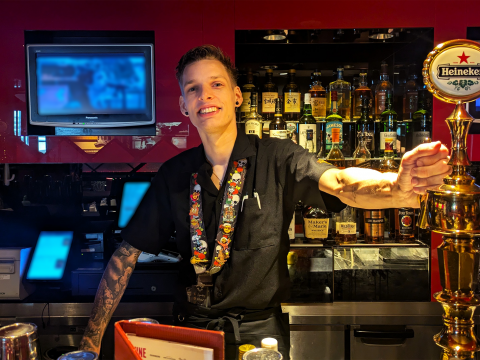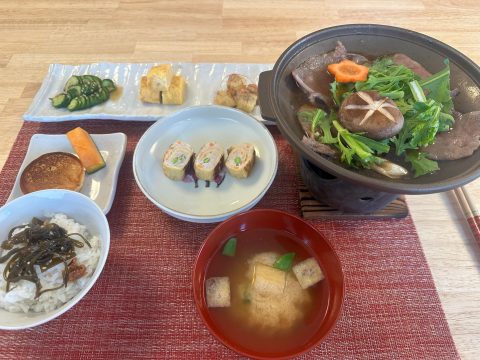Interview: A young Indian restaurant owner
WORK’IN JAPAN
22.04.2025


“When I opened this restaurant about one year ago, I wanted to serve a variety of authentic Indian food.
Many Indian restaurants in Japan don’t serve authentic Indian food, but rather dishes from neighboring countries. Many Japanese people think that typical Indian food is naan with butter chicken curry, but there is so much more delicious Indian food to enjoy!
To pursue this goal, I gathered chefs with work experience in different areas of India. They are all from Odisha like me, but one chef worked in Delhi, so he is our specialist in Northern Indian cuisine. Another chef worked in Chennai, which is in the South, and the third chef worked in Kolkata, which makes him the specialist in Eastern and Bengali cuisine.
They also have about 10 years of work experience in Japan. This way, Japanese customers can try Indian food from all over India.”

“Well, one difference from restaurants in India is that we offer different spice levels. Customers can choose from five different spice levels, which makes the dishes suitable for everyone, including families with young children.
That’s uncommon in India. There is usually only one spice level at restaurants, which is similar to the highest level that we offer here. Then, people can add more spices themselves to make the dish even spicier.
We also have anko naan, which is naan filled with red bean paste. It’s inspired by Japanese anpan. Cheese naan and honey cheese naan are also Japanese inventions, but we offer them because they’re popular among Japanese customers.
Other than that, we keep everything very authentic.”

“The biggest challenge is the uncertainty in the number of customers.
When we opened, only a few customers came, and it took some time before more people knew this restaurant existed. When customers started realizing the authenticity of the food, they kept returning and recommended it to others or wrote positive online reviews.
We also started using online food delivery platforms, which helped expand our customer base.
But even now, there are days when there’s an overflow of customers, and the next day there can be almost nobody. Our customer flow seems impossible to predict and is very random.
Also, I was worried that the location wasn’t good. We’re on the outskirts of Tokyo, and there were already 16 other Indian restaurants in this area.”

“About 60 percent of our customers are Japanese and about 40 percent are Indians and other foreigners.
Many Indians like coming here because they know we serve authentic Indian food. We also have many tourists from India, Malaysia, and England, which also has a large Indian population.
Together with Western foreigners, many of them have dietary restrictions, which can make it difficult to eat at restaurants while visiting or living in Japan. Because Indian food doesn’t contain beef and many dishes are completely vegetarian, they can eat here with peace of mind.
Many of our Japanese customers are either curious about Indian food from other regions or have traveled to India. A lot of them, after visiting us once, come back every now and then—even if they have to travel far. Most of our customers are actually not from this area, but from all over Tokyo.”

“I especially recommend dishes from Odisha. My personal favorite is ghiarna mutton curry. It’s a soup curry with potato and soft mutton, served with lemon rice on the side.
We also offer Odisha-style fish curry, which is made from katla, a freshwater fish, and a mustard-based curry gravy. We serve Bengali fish curry too, which uses different ingredients.
Other popular dishes are South Indian dosa, which is similar to a very large crepe with a spicy potato filling.
Thali is a platter with several small curries and rice. This also comes from South India, where the curries are thinner, like soup. You eat it with a type of flatbread instead of naan, which is from Northern India.
Biryani tastes different in every region. Our biryani is Kolkata-style. Each portion has a big potato and an egg in it. It’s a bit drier than the biryani from Delhi, for example, and we eat it with curry and yogurt sauce.
Lastly, our butter chicken is prepared with different kinds of nuts to make the sauce creamier and thicker. Some of our customers order this curry every time they come here, so that’s how we know we’re doing a good job.”









